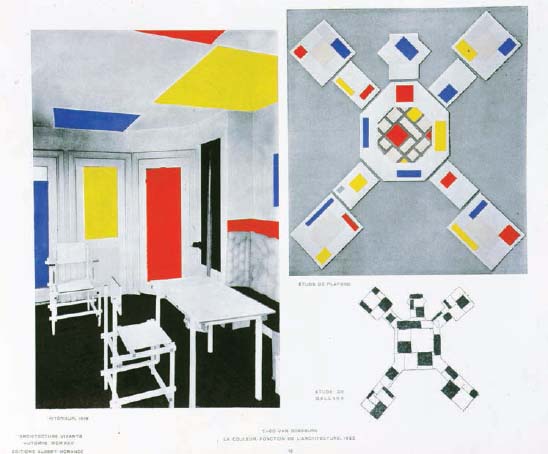The Modern World During and After the World Wars, C. 1914–1960Early Twentieth-Century Avant-Garde |
What is De Stijl? |
The violence and destruction of World War I shocked the world and groups of artists responded in various ways. For Dutch painter and architect Theo van Doesburg (1884–1931), and Dutch painters Piet Mondrian (1872–1944) and Bart van der Leck (1876–1958), the goal was to create art that promoted universal peace and harmony, both visually and politically. They named their movement De Stijl, which literally means “the Style.” De Stijl is characterized by flat colors and simplified, rectilinear forms—a result of the group’s need for visual clarity and mathematical simplification. De Stijl is considered to be “reductive” because visual complexity has been distilled or reduced to only the most pure, meaningful elements. For example, De Stijl artists preferred primary colors: red, yellow, and blue or neutral colors such as black, white, and gray. The term De Stijl can be used to describe painting, furniture design, and architecture. Works include Gerrit Rietveld’s Red-Blue Chair (1923), the Schroeder House in the Netherlands, and the paintings of Piet Mondrian.

This image shows an interior (1919), and a study of a ceiling (1925) by De Stijl founder Theo van Doesburg, originally published in the Autumn 1924 issue of the Paris journal, L’Architecture Vivante. (Art courtesy The Art Archive.)
